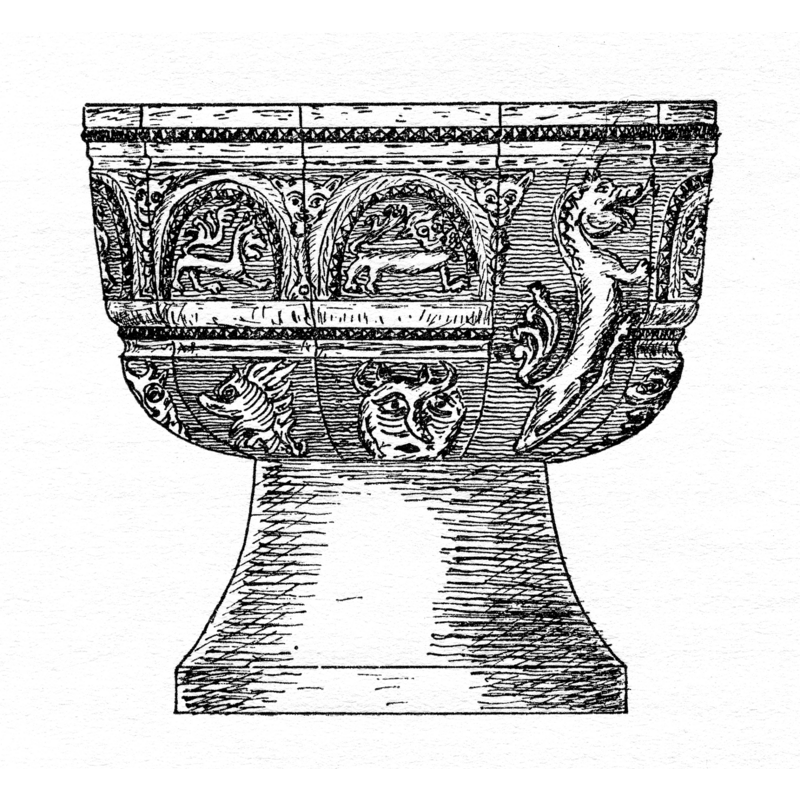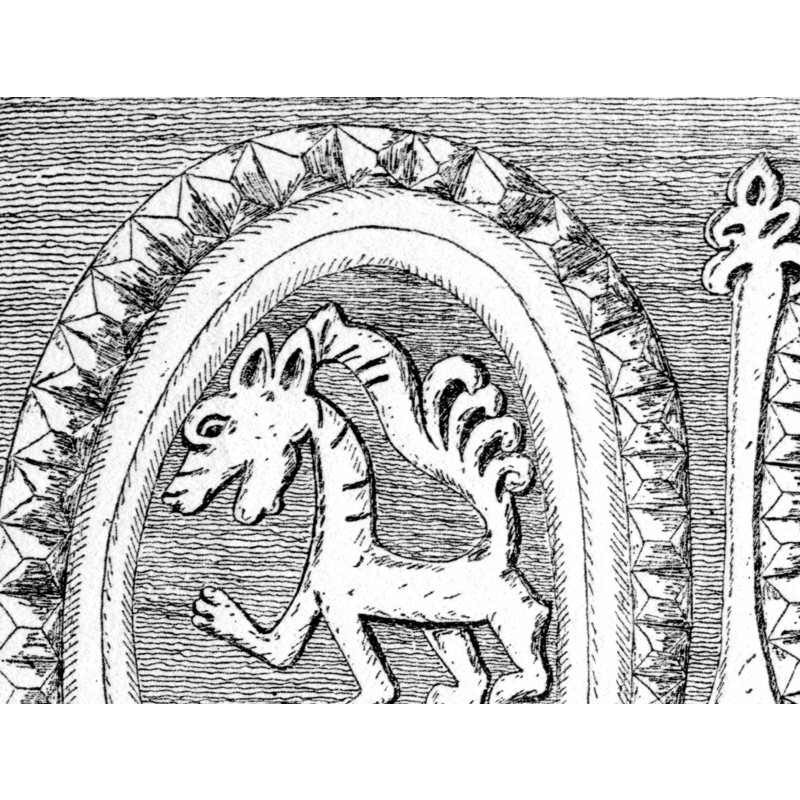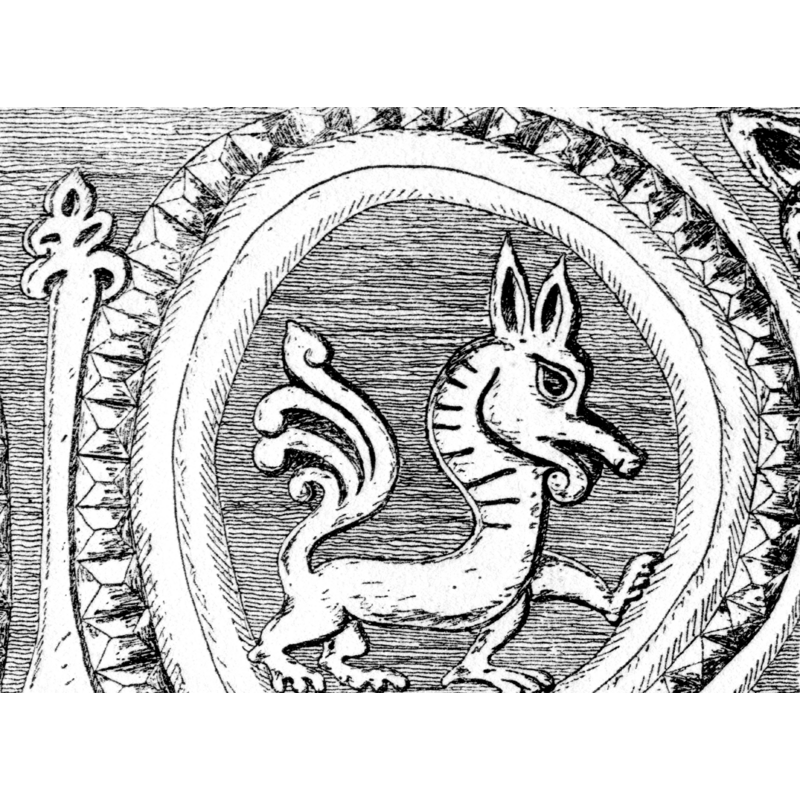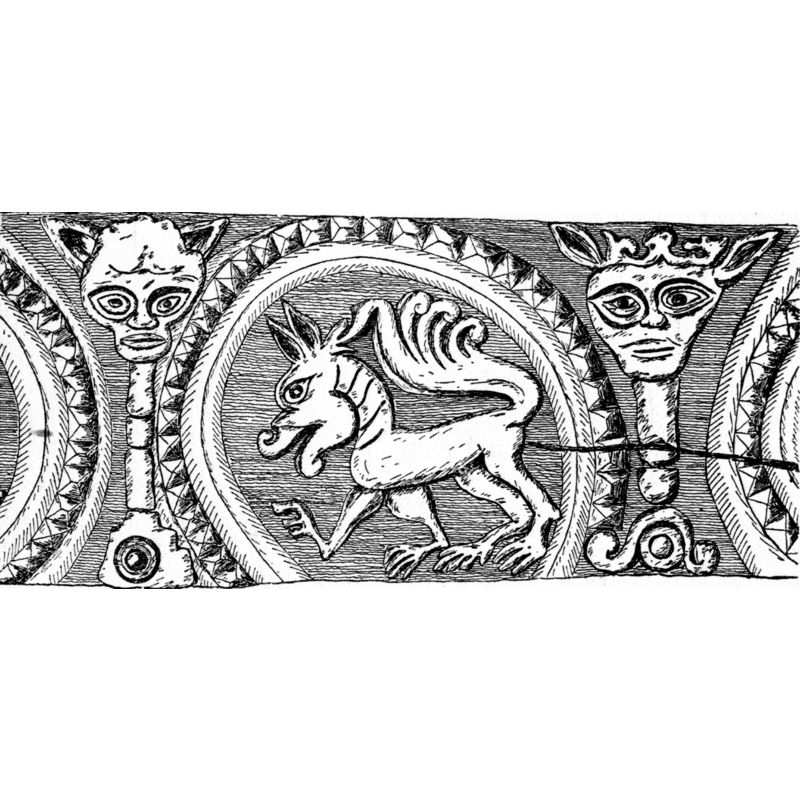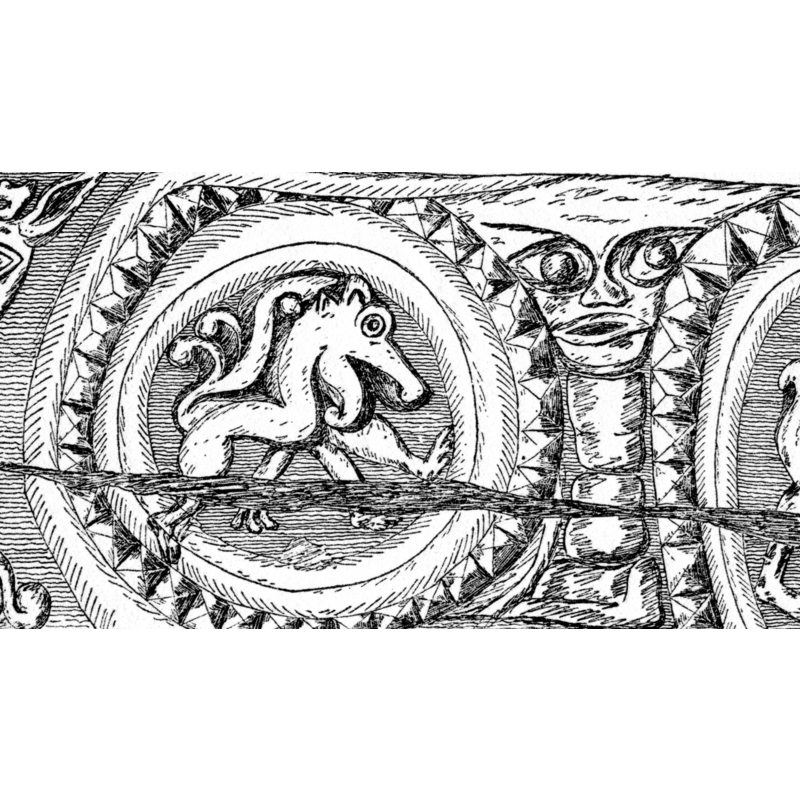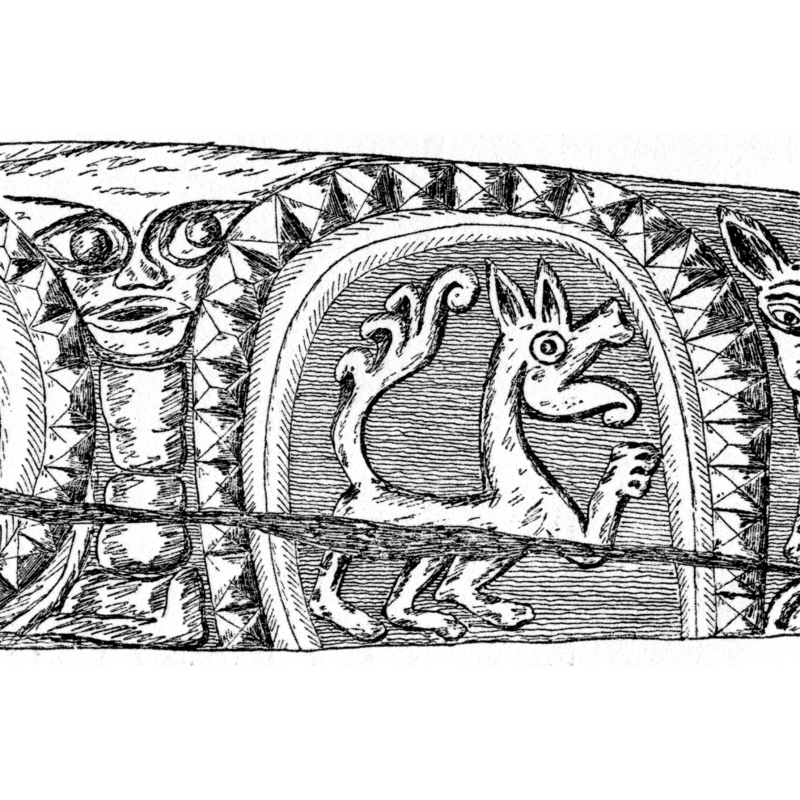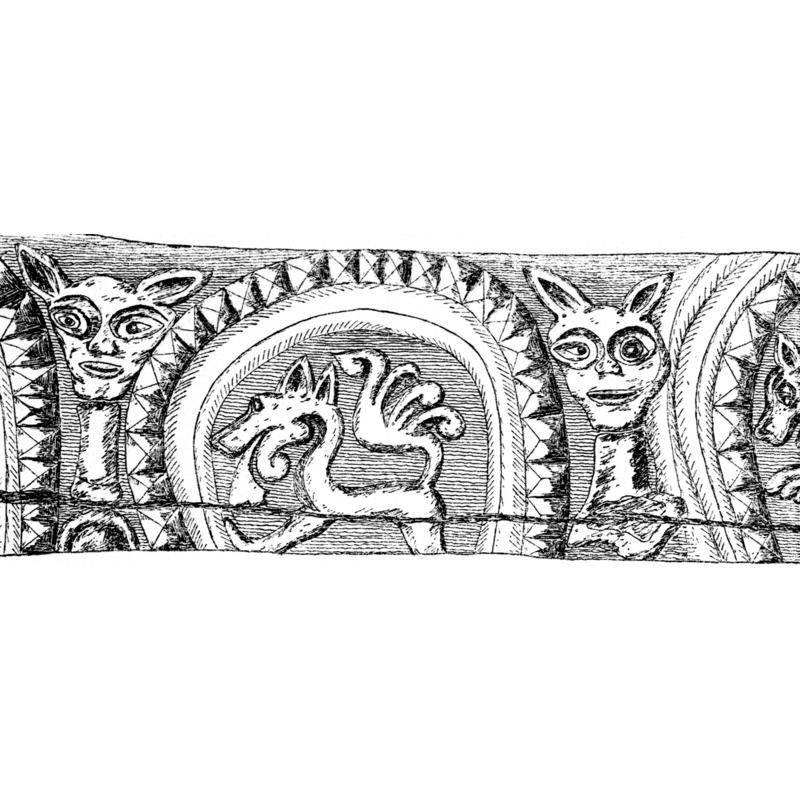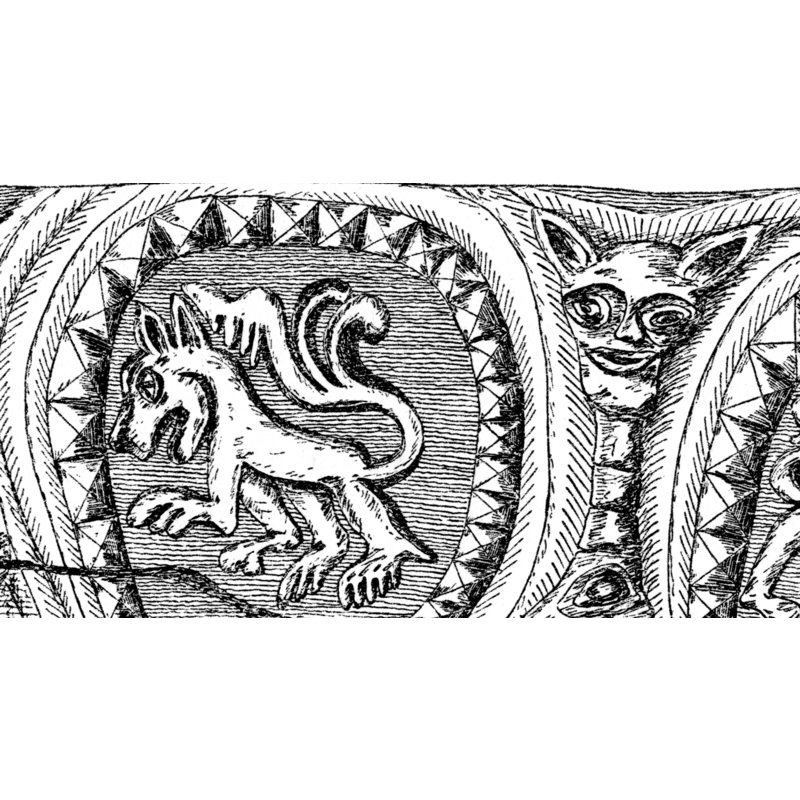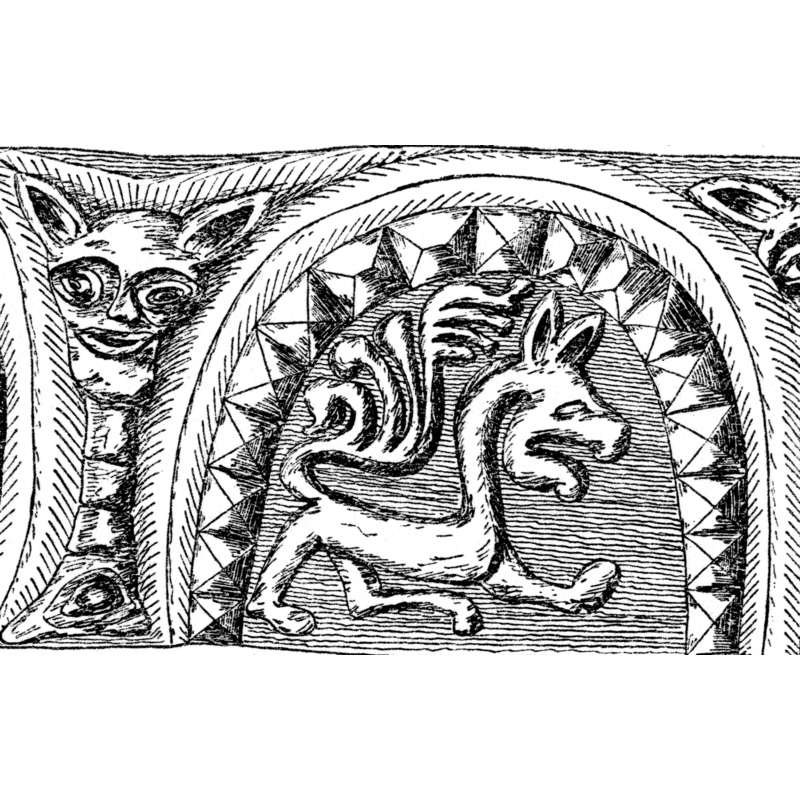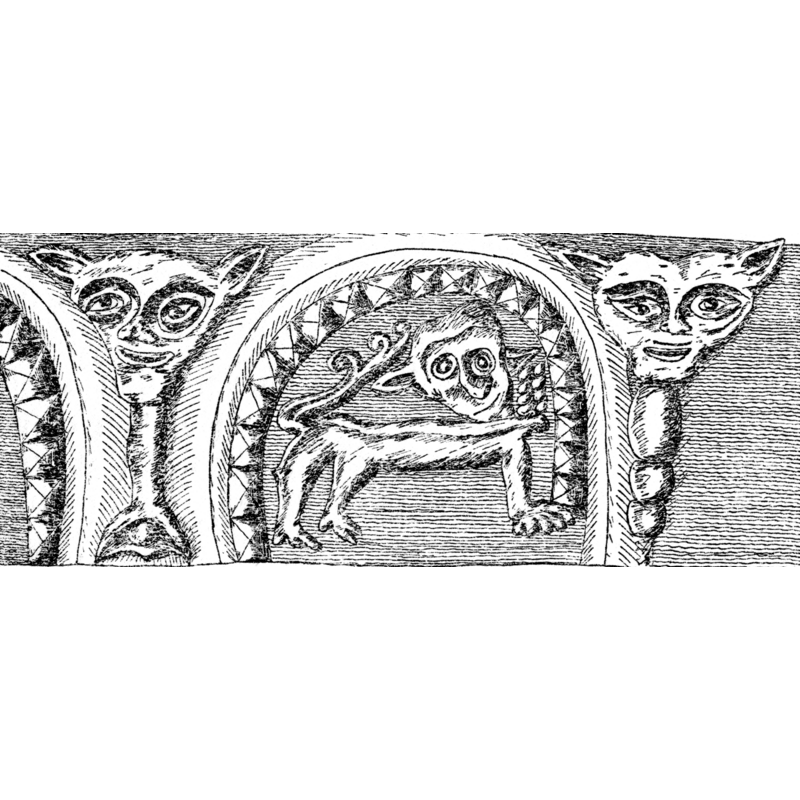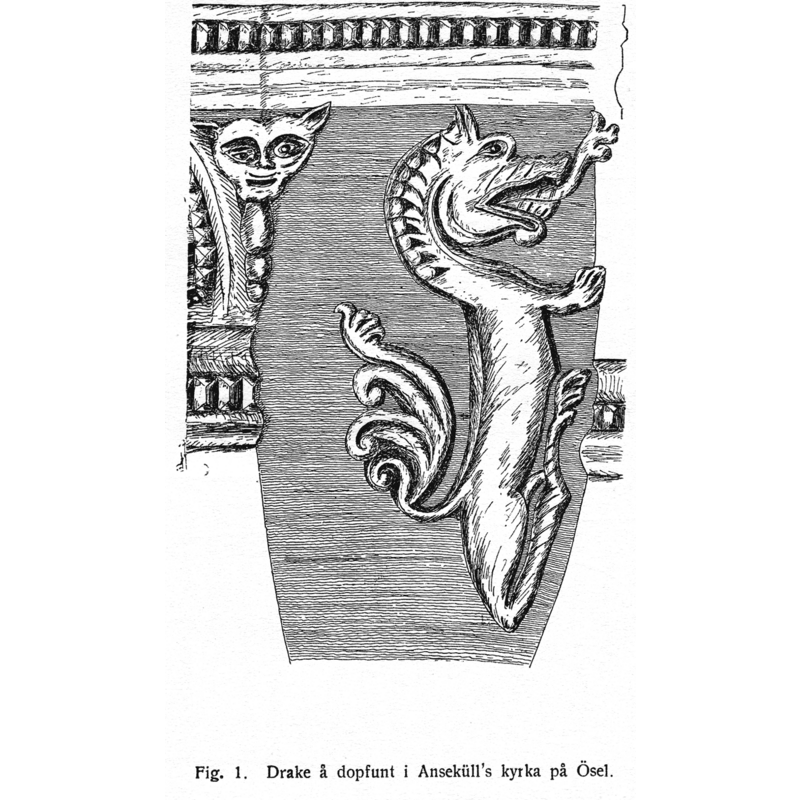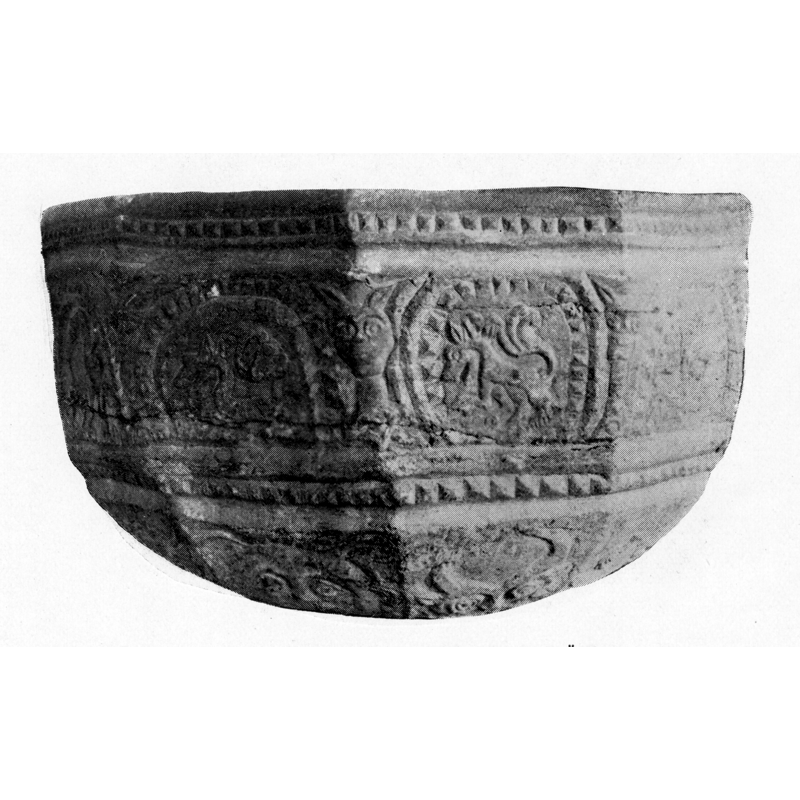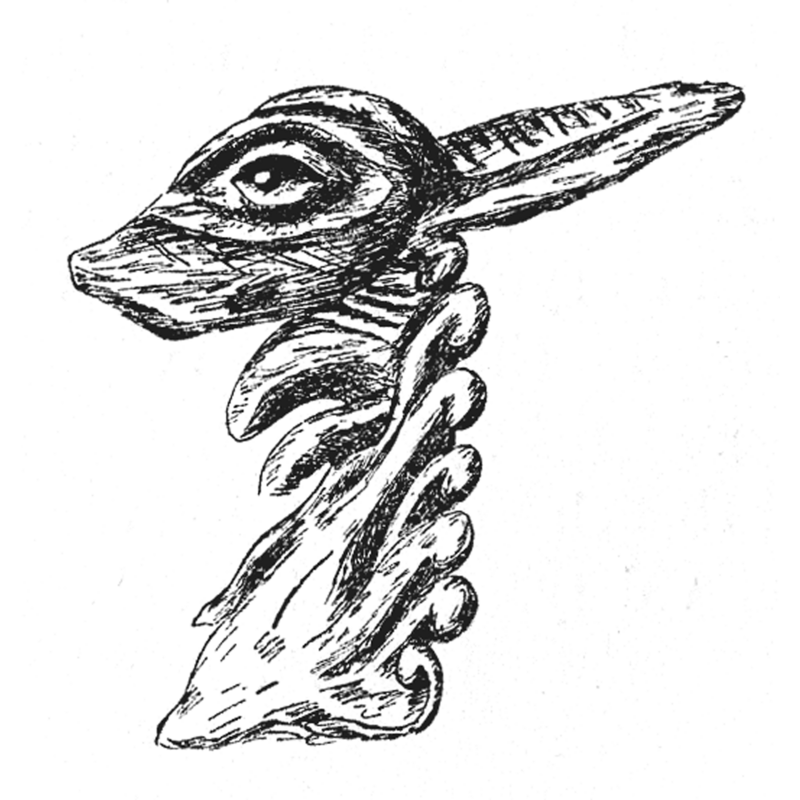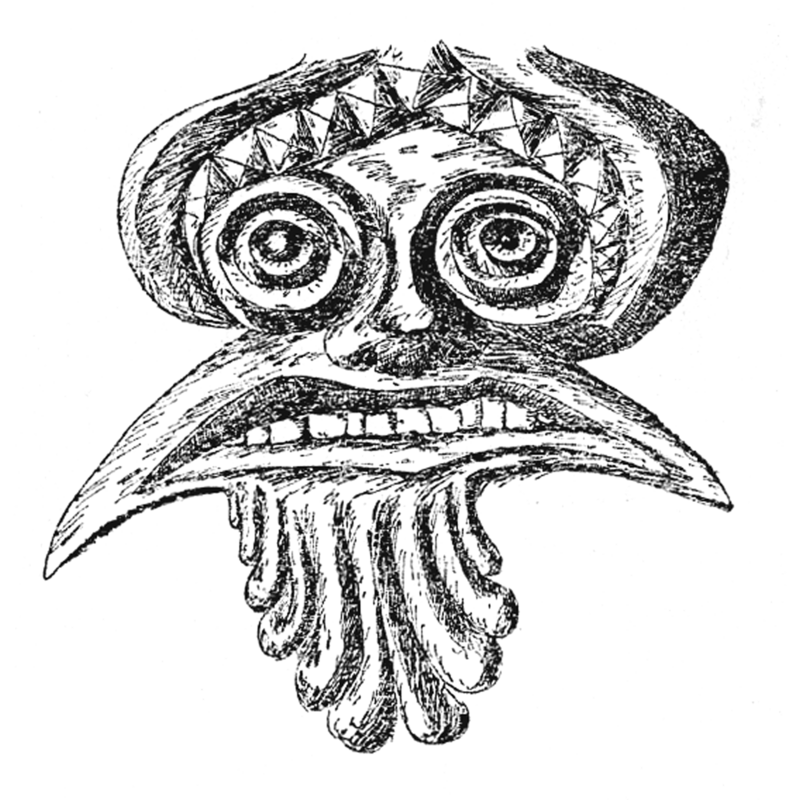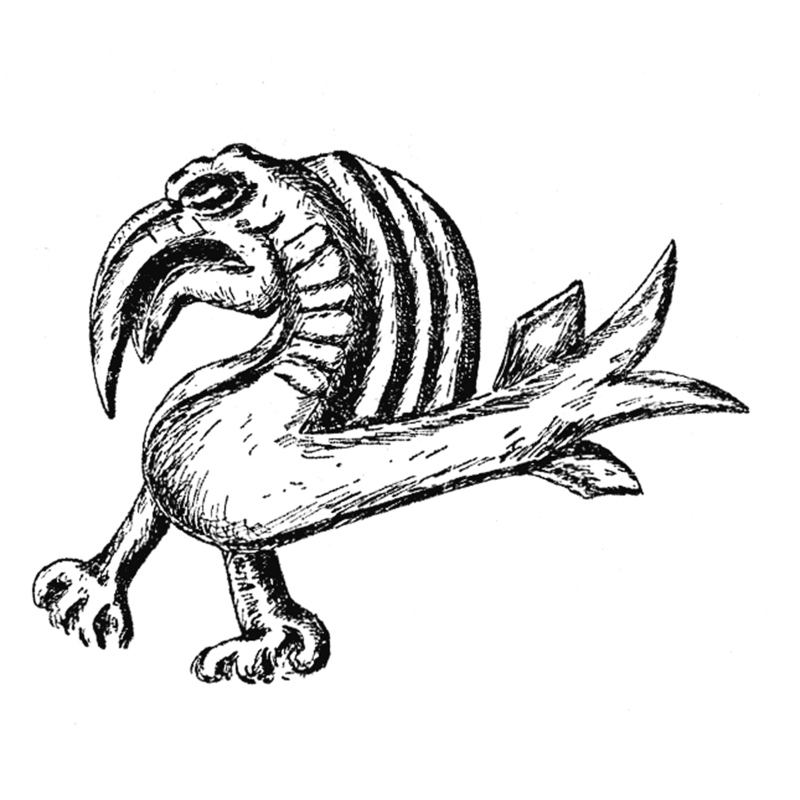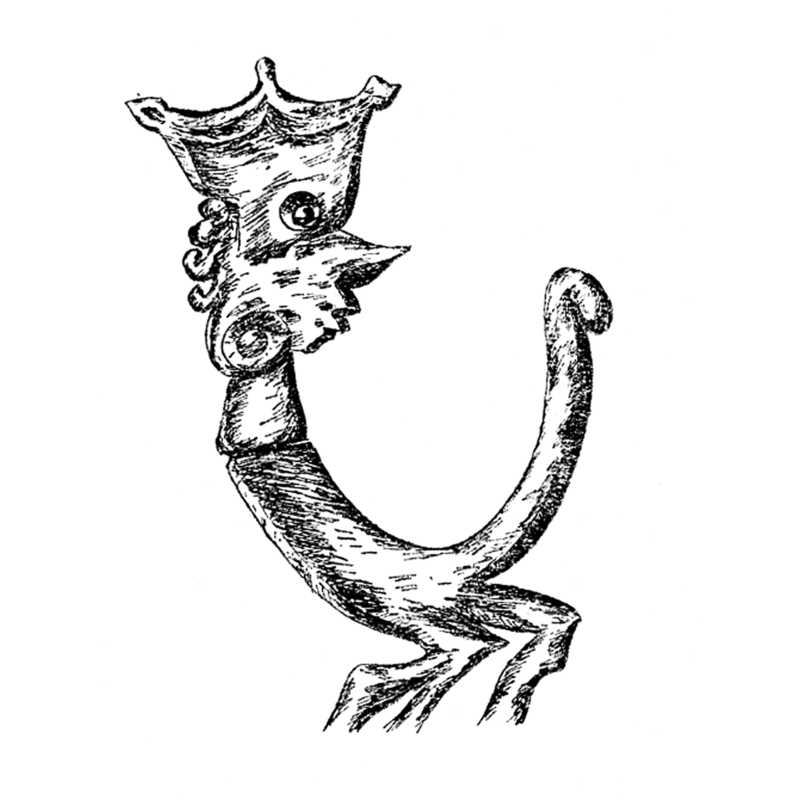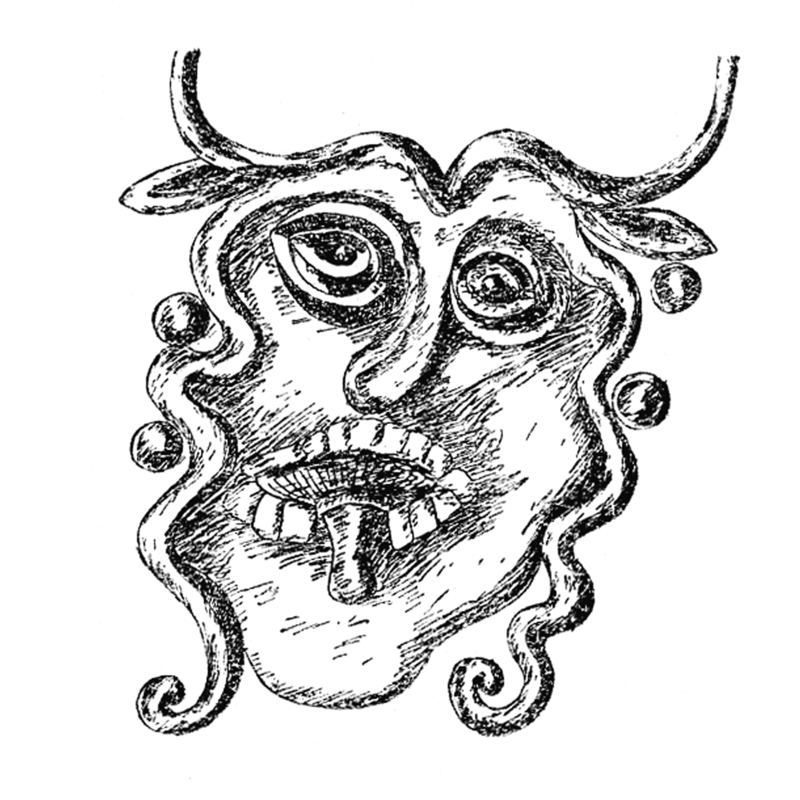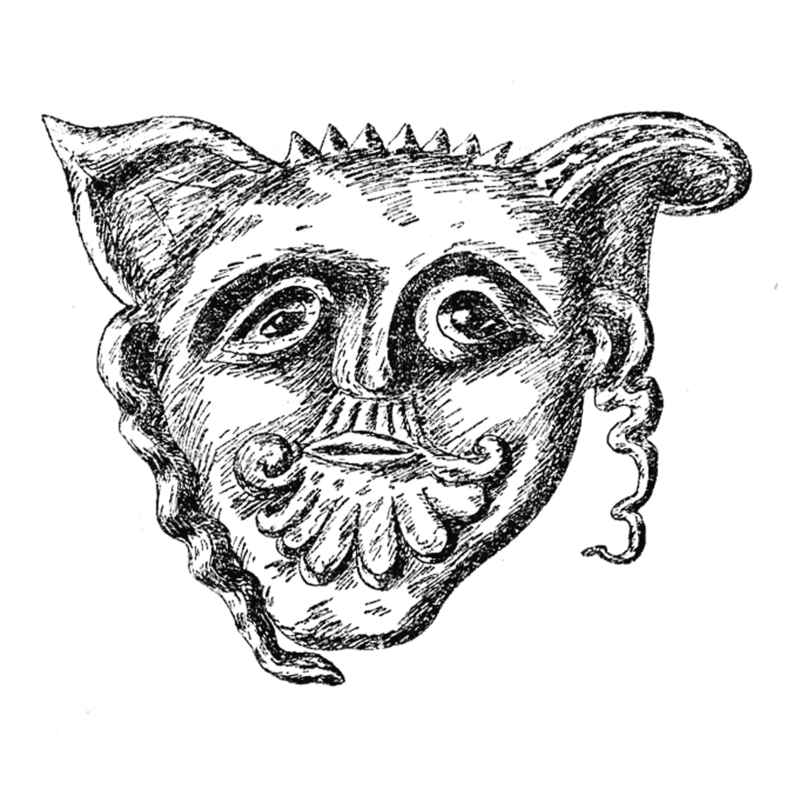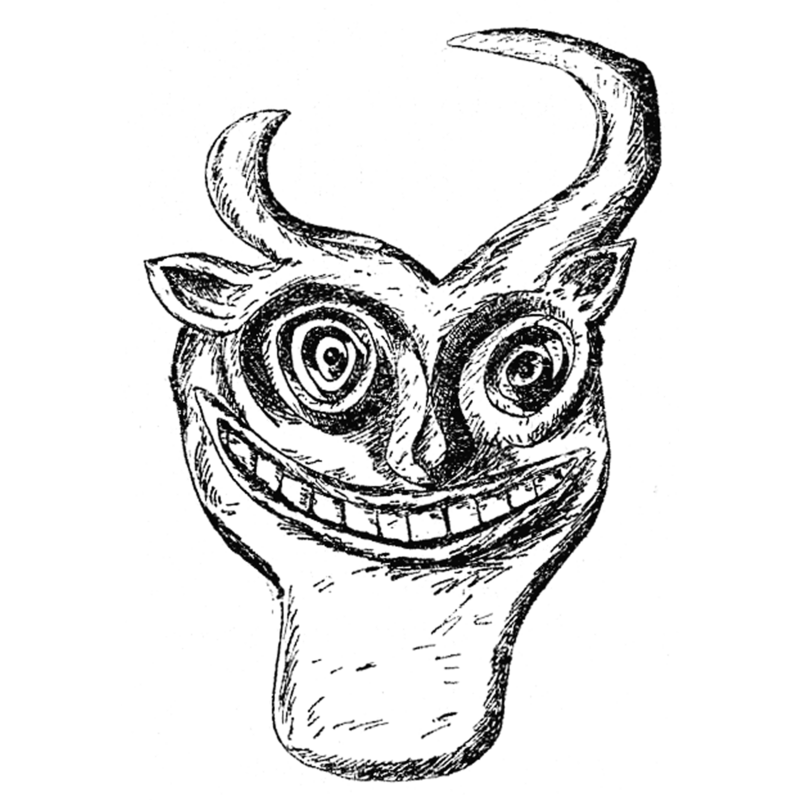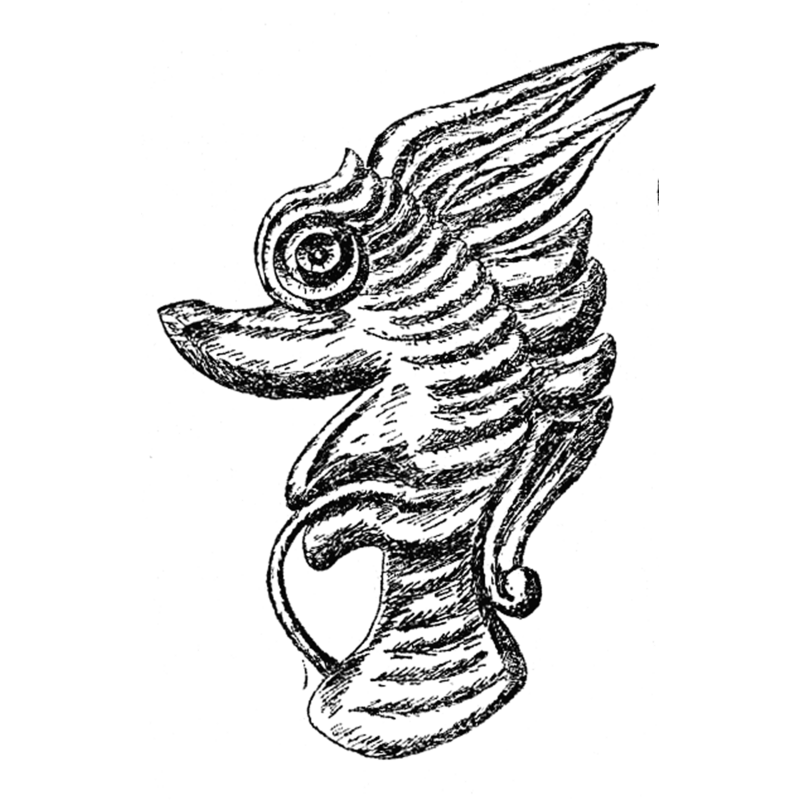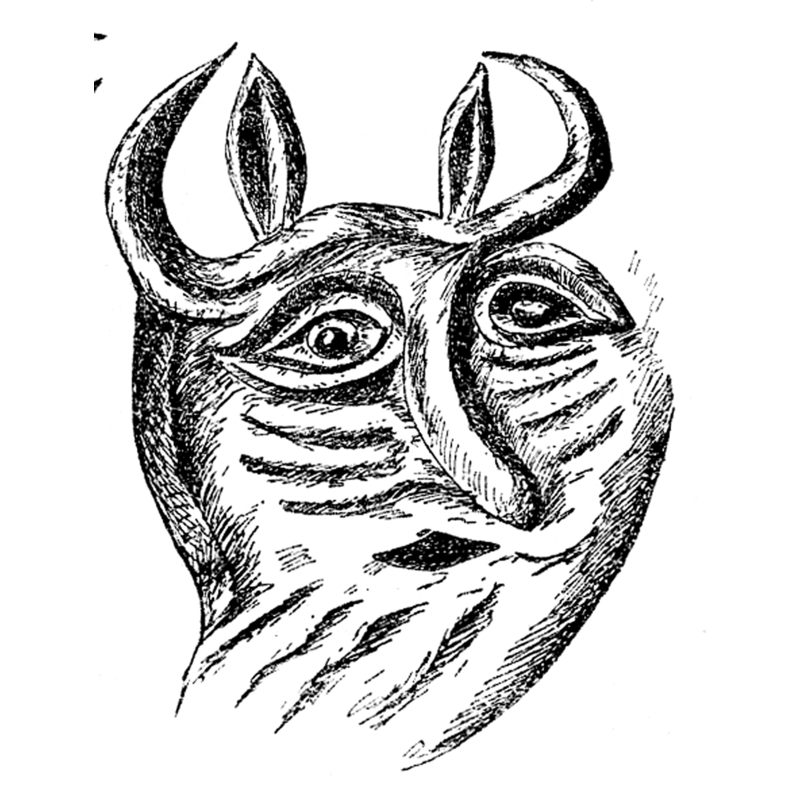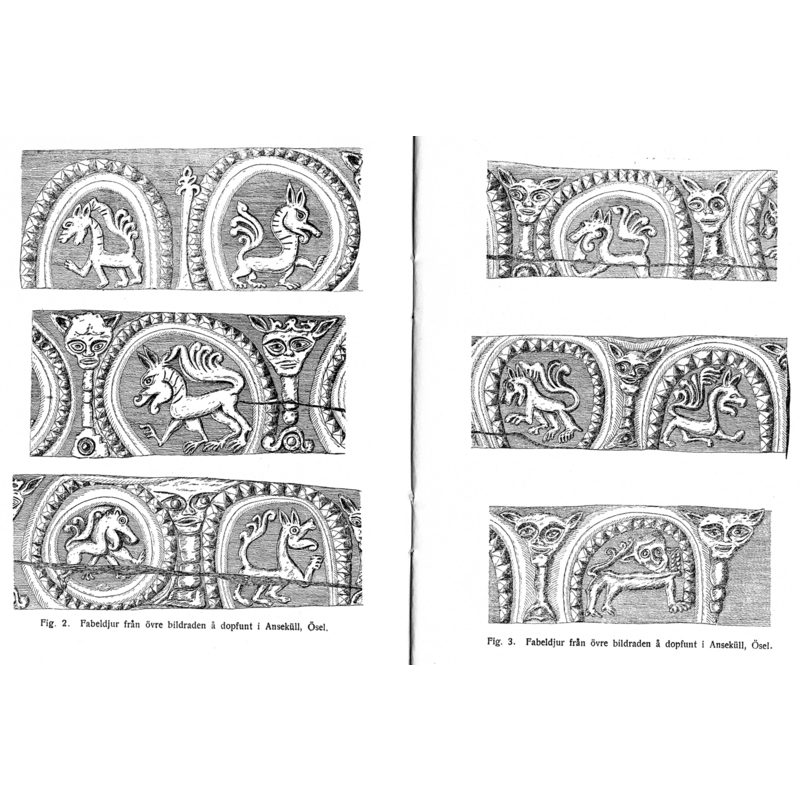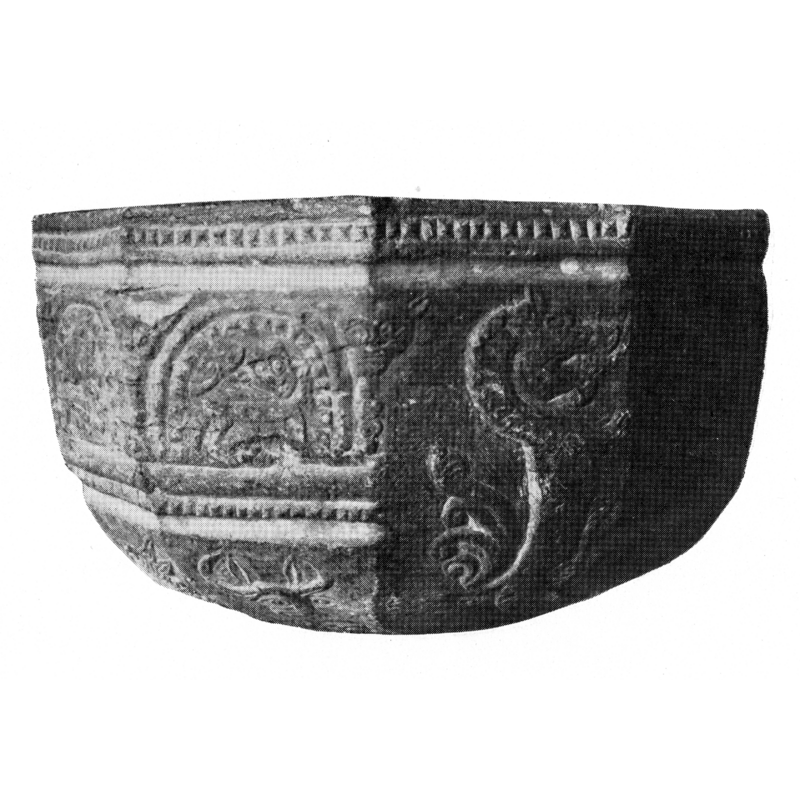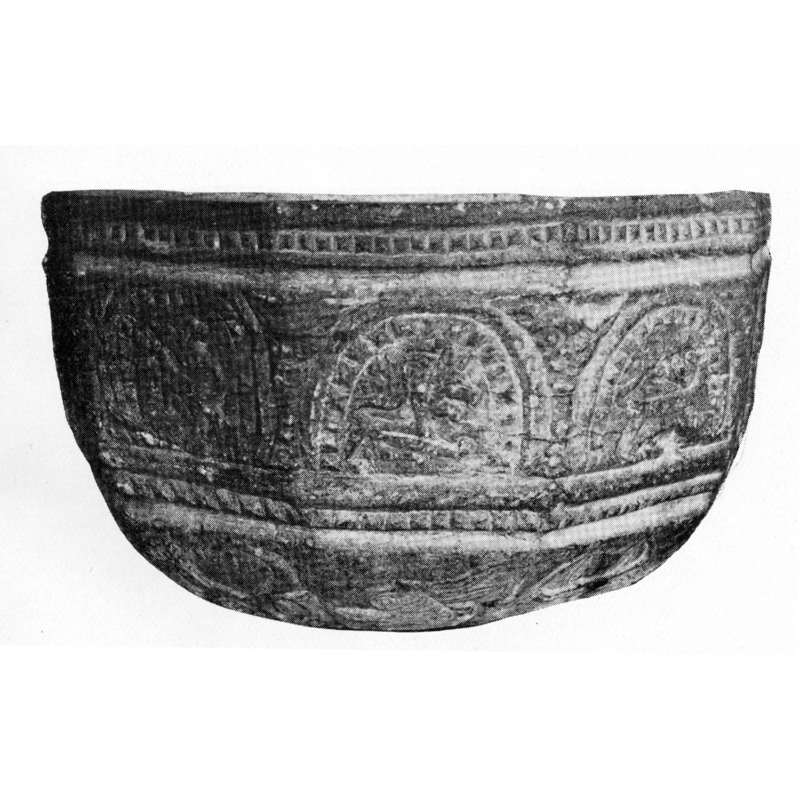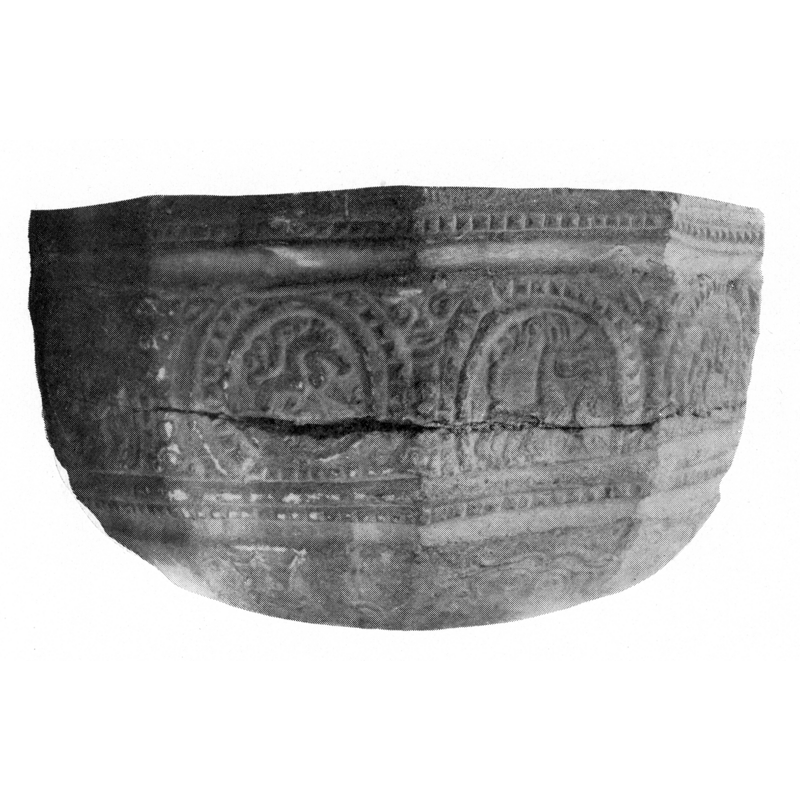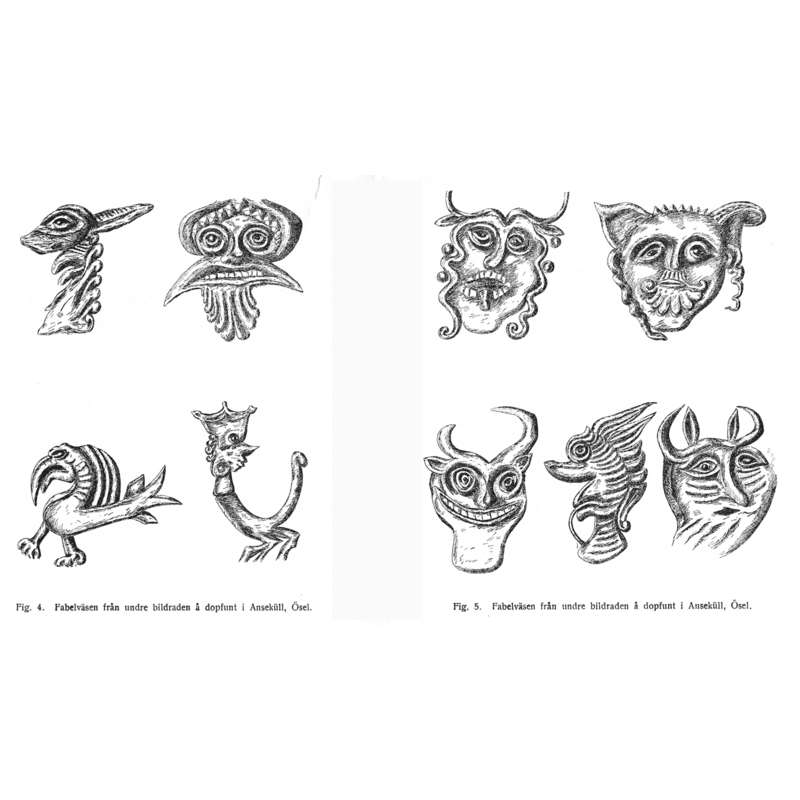Ansekull / Anseküll / Anseküla / Ansekula
Image copyright © [in the public domain]
PD
Results: 39 records
B01: animal - mammal - lion? - passant
Scene Description: facing left
Copyright Statement: Image copyright © [in the public domain]
Image Source: digital image of an illustration in Kjellin (1925)
Copyright Instructions: PD
B02: animal - mammal - lion? - passant
Scene Description: facing right
Copyright Statement: Image copyright © [in the public domain]
Image Source: digital image of an illustration in Kjellin (1925)
Copyright Instructions: PD
B03: animal - mammal - lion? - passant
Scene Description: facing left
Copyright Statement: Image copyright © [in the public domain]
Image Source: digital image of an illustration in Kjellin (1925)
Copyright Instructions: PD
B04: animal - mammal - lion? - passant
Scene Description: facing right
Copyright Statement: Image copyright © [in the public domain]
Image Source: digital image of an illustration in Kjellin (1925)
Copyright Instructions: PD
B05: animal - mammal - lion? - passant
Scene Description: facing right
Copyright Statement: Image copyright © [in the public domain]
Image Source: digital image of an illustration in Kjellin (1925)
Copyright Instructions: PD
B06: animal - mammal - lion? - passant
Scene Description: facing left
Copyright Statement: Image copyright © [in the public domain]
Image Source: digital image of an illustration in Kjellin (1925)
Copyright Instructions: PD
B07: animal - mammal - lion? - passant
Copyright Statement: Image copyright © [in the public domain]
Image Source: digital image of an illustration in Kjellin (1925)
Copyright Instructions: PD
B08: animal - mammal - lion? - passant
Scene Description: facing right
Copyright Statement: Image copyright © [in the public domain]
Image Source: digital image of an illustration in Kjellin (1925)
Copyright Instructions: PD
B09: animal - fabulous animal or monster - lion with human face? - passant
Scene Description: facing right
Copyright Statement: Image copyright © [in the public domain]
Image Source: digital image of an illustration in Kjellin (1925)
Copyright Instructions: PD
B10: animal - fabulous animal or monster - dragon
Copyright Statement: Image copyright © [in the public domain]
Image Source: digital image of an illustration in Kjellin (1925)
Copyright Instructions: PD
BBL01: design element - motifs - nail-head
Scene Description: a band of, all around
Copyright Statement: Image copyright © [in the public domain]
Image Source: digital image of an illustration in Kjellin (1925)
Copyright Instructions: PD
BBU01: design element - motifs - nail-head
Scene Description: a band of, all around
Copyright Statement: Image copyright © [in the public domain]
Image Source: digital image of an illustration in Kjellin (1925)
Copyright Instructions: PD
BS01: design element - motifs - plant
Copyright Statement: Image copyright © [in the public domain]
Image Source: digital image of an illustration in Kjellin (1925)
Copyright Instructions: PD
BS02: animal - fabulous animal or monster
Copyright Statement: Image copyright © [in the public domain]
Image Source: digital image of an illustration in Kjellin (1925)
Copyright Instructions: PD
BS03: animal - fabulous animal or monster
Copyright Statement: Image copyright © [in the public domain]
Image Source: digital image of an illustration in Kjellin (1925)
Copyright Instructions: PD
BS04: animal - fabulous animal or monster
Copyright Statement: Image copyright © [in the public domain]
Image Source: digital image of an illustration in Kjellin (1925)
Copyright Instructions: PD
BS05: animal - fabulous animal or monster
Copyright Statement: Image copyright © [in the public domain]
Image Source: digital image of an illustration in Kjellin (1925)
Copyright Instructions: PD
BS06: animal - fabulous animal or monster
Copyright Statement: Image copyright © [in the public domain]
Image Source: digital image of an illustration in Kjellin (1925)
Copyright Instructions: PD
BS07: animal - fabulous animal or monster
Copyright Statement: Image copyright © [in the public domain]
Image Source: digital image of an illustration in Kjellin (1925)
Copyright Instructions: PD
BS08: animal - fabulous animal or monster
Copyright Statement: Image copyright © [in the public domain]
Image Source: digital image of an illustration in Kjellin (1925)
Copyright Instructions: PD
BS09: animal - fabulous animal or monster
Copyright Statement: Image copyright © [in the public domain]
Image Source: digital image of an illustration in Kjellin (1925)
Copyright Instructions: PD
BU01: animal - fabulous animal or monster
Copyright Statement: Image copyright © [in the public domain]
Image Source: digital image of an illustration in Kjellin (1925)
Copyright Instructions: PD
BU02: head - grotesque or fantastic
Copyright Statement: Image copyright © [in the public domain]
Image Source: Kjellin (1925)
Copyright Instructions: PD
BU03: animal - fabulous animal or monster
Copyright Statement: Image copyright © [in the public domain]
Image Source: digital image of an illustration in Kjellin (1925)
Copyright Instructions: PD
BU04: animal - fabulous animal or monster
Copyright Statement: Image copyright © [in the public domain]
Image Source: digital image of an illustration in Kjellin (1925)
Copyright Instructions: PD
BU05: head - grotesque or fantastic
Copyright Statement: Image copyright © [in the public domain]
Image Source: digital image of an illustration in Kjellin (1925)
Copyright Instructions: PD
BU06: head - grotesque or fantastic
Copyright Statement: Image copyright © [in the public domain]
Image Source: digital image of an illustration in Kjellin (1925)
Copyright Instructions: PD
BU07: head - grotesque or fantastic
Copyright Statement: Image copyright © [in the public domain]
Image Source: digital image of an illustration in Kjellin (1925)
Copyright Instructions: PD
BU08: animal - fabulous animal or monster
Copyright Statement: Image copyright © [in the public domain]
Image Source: digital image of an illustration in Kjellin (1925)
Copyright Instructions: PD
BU09: head - grotesque or fantastic
Copyright Statement: Image copyright © [in the public domain]
Image Source: digital image of an illustration in Kjellin (1925)
Copyright Instructions: PD
view of basin
Copyright Statement: Image copyright © [in the public domain]
Image Source: digital image of an illustration in Kjellin (1925)
Copyright Instructions: PD
view of basin - side 1
Copyright Statement: Image copyright © [in the public domain]
Image Source: digital image of an illustration in Kjellin (1925)
Copyright Instructions: PD
view of basin - side 2
Copyright Statement: Image copyright © [in the public domain]
Image Source: digital image of an illustration in Kjellin (1925)
Copyright Instructions: PD
view of basin - side 3
Copyright Statement: Image copyright © [in the public domain]
Image Source: digital image of an illustration in Kjellin (1925)
Copyright Instructions: PD
view of basin - side 4
Copyright Statement: Image copyright © [in the public domain]
Image Source: digital image of an illustration in Kjellin (1925)
Copyright Instructions: PD
view of basin - underbowl
Copyright Statement: Image copyright © [in the public domain]
Image Source: digital image of an illustration in Kjellin (1925)
Copyright Instructions: PD
view of font
Copyright Statement: Image copyright © [in the public domain]
Image Source: digital image of an illustration in Kjellin (1925)
Copyright Instructions: PD
view of font
Copyright Statement: Image copyright © Kirjastus Kunst, 1975
Image Source: B&W photograph in Eesti Kunst (1975)
Copyright Instructions: PERMISSION NOT AVAILABLE -- IMAGE NOT FOR PUBLIC USE
view of font - plan and elevation
Copyright Statement: Image copyright © [in the public domain]
Image Source: digital image of an illustration in Kjellin (1925)
Copyright Instructions: PD
INFORMATION
FontID: 08735ANS
Object Type: Baptismal Font1
Church/Chapel: Maarija Kirik
Church Patron Saints: St. Mary the Virgin
Country Name: Estonia
Location: Saaremaa, Saaremaa
Directions to Site: Located at the narrow isthmus that lies at the S of the island, between Kuresaare and Sääre [Saaremaa/Ösel is the largest of a number of islands located at the mouth of the Gulf of Riga, in the Baltic Sea, NE of Gotland]
Historical Region: Saaremaa Island / Osel island
Font Location in Church: Inside the church
Century and Period: 13th - 14th century, Transitional
Workshop/Group/Artisan: Fröjelgruppen?
Cognate Fonts: The font at Fröjel and the base of a font in the Gotland's Fornsalen Museum of Visby, may have related programs to the one on this font
Described and illustrated in Kjellin (1926) as a baptismal font of ca. 1200 [cf. Index entry for Fröjel for dating issue] originally made in Gotland. Kjellin (ibid.) studies the fabulous animal iconography of this font and suggests comparisons with the one on the Fröjel font [cf. Index entry] and with some of the motifs that appear on the base of a baptismal font now kept at the Fornsal Museum in Visby (Gotland). Described and illustrated in Tuulse (1949) [after Kjellin], who relates it to the 'Müschelcuppen' group. Noted and illustrated in Maiste (2007). The font consists of two parts: a decagonal basin decorated with fabulous animals and masks around the basin sides and underbowl, and a plain pedestal base, roughly conical, of the type commonly found in some of the Paradise font group; the basin side has a rampant dragon as the central motif; it is the only motif that stretches over both basin side and underbowl; the basin side contains nine irregular arches and/or circles that appear made of nail-head (?) motif; each arch contains a fabulous animal, all but one being quadrupeds in a passant pose and adorned with tails over the back in the manner commonly found in Romanesque lions; the odd one is also a quadruped but, unlike its neighbours, it has a grotesque quasi-human face and looks stright out although the body is in passant position; the spandrels between the arches/circles are occupied by eight grotesque heads standing on pillar-like stems; the odd one is a schematic plant motif; most have rather triangular heads with pointed ears and large almond-shaped eyes; the underbowl is decorated with nine grotesque motifs ranging from the humanoid mask to the totally whimsical avian types; the upper and lower sides of the basin have a thin band of nail-head motif all around between two flat mouldings. Although Kjellin follows Roosval et al. in the dating of this font, the fonts of this group should probably dated to the 14th century. [We are grateful to professor Øystein Hjort, Købenvns Universitet, for bringing this font to our attention and for the gift of Helge Kjellin's book].
MEDIUM AND MEASUREMENTS
Material: stone, limestone
Number of Pieces: two
Font Shape: decagonal (mounted)
Basin Interior Shape: round
Basin Exterior Shape: decagonal
Rim Thickness: 7 cm
Diameter (inside rim): 64 cm
Diameter (includes rim): 88.5 cm
Basin Depth: 26 cm
Basin Total Height: 48.5 cm
Height of Base: 35 cm
Font Height (less Plinth): 83.5 cm [calculated]
Notes on Measurements: Kjellin (1926: 9); [also in Tuulse (1949), after Kjellin]
REFERENCES
Kjellin, Helge, En gotländsk fabeljursfunt på Ösel och en gammal handelsväg Österut, Stockholm: Särtryck ur Konsthistoriska Sällskapets Publikation (A.B. Sveriges Litografiska Tryckerier), 1925
Maiste, Juhan, Eesti kunsti lugu, Tallinn: Kirjastus Varrak, 2007
Tuulse, Armin, "Mittlealterliche Taufsteine in Estland", Apophoreta tartuensia: acta universitati tartuensi (dorpatensi) ad diem restitutionis kal. dec. MCMXIX nunc tricesimum celebrandum a professoribus discipulisque eorum in exilio dedicata = Pühendusteos: Eesti Vabriigi Tartu Ülikoolile tema avamise [...], Holmiae = Stockholm: Societas Litterarum Estonica in Svecia = Eesti Teaduslik Selts Rootsis, 1949
